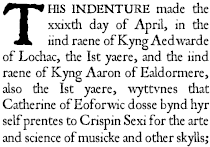
Fig 1: A close-up showing formatting (in JSL Ancient font).
Crispin Sexi (Jaysen Ollerenshaw), May 2006.
In the SCA, members of the Order of the Laurel take on apprentices. The Laurel/apprentice relationship varies a lot depending on the individuals involved, but the normal aim is for the Laurel to teach their art to the apprentice and guide them in their endeavours. The usual ceremonies in the SCA for taking on an apprentice are as follows:
Laurel: You want to be my apprentice?
Pleb: Yep.
Laurel: OK.
or
Pleb: Hey can I be your apprentice? Can I? Huh?
Laurel: Let me think on this. Yes.
Sometimes the Laurel also gives the apprentice a green belt as a symbol of the apprentice's status. Sometimes the apprentice declares their fealty to the Laurel.
When I took on my first apprentice, I decided that we needed a good and proper contract in a period style. I had vague ideas that I should promise to teach her my trade, and that she had to work for me for a pittance. So I did a bit of reading, and found that the medieval apprentice contract was called an indenture. I've collected several period examples, and from these devised a suitable one for my own apprentices.
These indentures were commonly written twice on a piece of paper that was torn or raggedly cut in half so that the two copies could be matched together if the contact was ever disputed. The term "indenture" refers to this ragged edge. The document was witnessed by the parties involved (usually the master and the father of the apprentice) and other respected members of the community. The indenture made the master responsible for the apprentice, and the apprentice became more or less a servant living in the master's house until the term was up (usually seven years). Often an additional journeyman year was also listed, during which the apprentice had to make a masterwork in their spare time and with their own money.
May twelfth, in the year of the Incarnation of the Lord, 1248.
I, John of St. Maximin, lawyer, place with you John Cordier, money-changer, my son William Deodat, as an apprentice, so that you may teach and instruct him in the art of money-changing, for two complete and continuous years from this date. I promise by this agreement that I will take care that my son will serve his apprenticeship with you and that he will be faithful and honest in all his dealings for the whole of the said period, and that he will not depart from you nor take anything away from you. And if it should happen, which God forbid, that the said William should cause you any loss I promise to reimburse you by this agreement, believing in your unsupported word, etc. Also I promise to give by this agreement for the expenses of the said William food, that is bread and wine and meat, fourteen heminae of good grain and fifty solidi of the money now current in Marseilles, at your request, and to provide the said William with clothing and necessaries, pledging all my goods, etc.; renouncing the benefit of all laws, etc.
To this I, the said John Cordier, receive the said William as a pupil and promise you, the said John St. Maximin, to teach your son well and faithfully the business of money-changing, etc., pledging all my goods, etc.; renouncing the benefit of all laws, etc.
Witnesses, etc.
Source:
Internet Medieval Sourcebook, Apprenticeship Agreements: To a Money-Changer, 1248
http://www.fordham.edu/HALSALL/source/1248apprentice-ag2.html
From: L. Blancard, ed., Documents Inedits sur le Commerce de Marseille au Moyen Age, (Marseilles: Barlatier-Feissat, Pere et Fils, 1884), Vol. II, p. 155; reprinted in Roy C. Cave & Herbert H. Coulson, eds., A Source Book for Medieval Economic History, (Milwaukee: The Bruce Publishing Co., 1936; reprint ed., New York: Biblo & Tannen, 1965), pp. 144-145.
Scanned by Jerome S. Arkenberg, Cal. State Fullerton. The text has been modernized by Prof. Arkenberg.
April the thirteenth, in the year of the Lord 1248.
I, William, barber of Sestri, in good faith and without equivocation, place my self in your service and engage myself to work for you, Armand the barber, making my home with you, for learning the art or craft of barbering for a period of two years, at the salary or wage of forty solidi in the mixed money now current in Marseilles, promising to be faithful to you in all things, not to rob you, or take anything away from you, and not to leave you for a greater or less wage for any reason whatsoever, and to give you in good faith whatever money I am able to take, to tell you the truth, and to bear faith to you in all that I do.
I also promise to reimburse you for all expenses you incur on my behalf; and I promise to do all these things by agreement, and under pledge of one hundred solidi in royal crowns, the pledge being forfeited when the agreement is broken. For greater security I swear upon the Holy Gospels, touching them with my hand. And I pledge all my goods, etc., and renounce the benefit of all laws, etc.
And, I, the said Armand, admit all the foregoing, and promise by this agreement to give to you, the said William, forty solidi every year as your wage, and to provide for you, in sickness or in health, food and clothing for two complete years. Pledging all my goods, etc., renouncing the benefit of all laws, etc.
Witnesses, etc.
Source:
Medieval Sourcebook: Apprenticeship Agreements: To a Barber, 1248
http://www.fordham.edu/halsall/source/1248apprentice-barber.html
From: L. Blancard, ed, Documents Inedits sur le Commerce de Marseille au Moyen Age, (Marseilles: Barlatier-Feissat, Pere et Fils, 1884), Vol. II, p. 60, reprinted in Roy C. Cave & Herbert H. Coulson, A Source Book for Medieval Economic History, (Milwaukee: The Bruce Publishing Co., 1936; reprint ed., New York: Biblo & Tannen, 1965), p. 249.
Scanned by Jerome S. Arkenberg, Cal. State Fullerton. The text has been modernized by Prof. Arkenberg.
I. Arras.
Be it known to present and future aldermen that Ouede Ferconne apprentices Michael, her son, to Matthew Haimart on security of her house, her person, and her chattels, and the share that Michael ought to have in them, so that Matthew Haimart will teach him to weave in four years, and that he (Michael) will have shelter, and learn his trade there without board. And if there should be reason within two years for Michael to default she will return him, and Ouede Ferconne, his mother, guarantees this on the security of her person and goods. And if she should wish to purchase his freedom for the last two years she may do so for thirty-three solidi, and will pledge for that all that has been stated. And if he should not free himself of the last two years let him return, and Ouede Ferconne, his mother, pledges this with her person and her goods. And the said Ouede pledges that if Matthew Haimart suffers either loss or damage through Michael, her son, she will restore the loss and damage on the security of herself and all her goods, should Michael do wrong.
II. Marseilles.
April the ninth. I, Peter Borre, in good faith and without guile, place with you, Peter Feissac, weaver, my son Stephen, for the purpose of learning the trade or craft of weaving, to live at your house, and to do work for you from the feast of Easter next for four continuous years, promising you by this agreement to take care that my son does the said work, and that he will be faithful and trustworthy in all that he does, and that he will neither steal nor take anything away from you, nor flee nor depart from you for any reason, until he has completed his apprenticeship. And I promise you by this agreement that I will reimburse you for all damages or losses that you incur or sustain on my behalf, pledging all my goods, etc.; renouncing the benefit of all laws, etc. And I, the said Peter Feissac, promise you, Peter Borre, that I will teach your son faithfully and will provide food and clothing for him. Done at Marseilles, near the tables of the money-changers. Witnesses, etc.
Source:
Medieval Sourcebook: Two Apprenticeship Agreements for Weavers, c. 1250 [Arras and Marseilles]
http://www.fordham.edu/halsall/source/1250weaversapp.html
From: G. Espinas & H. Pirenne, eds., Recueil de Documents Relatifs a l'Histoire de l'lndustrie Drapi re en Flandre, (Brussels: Academie Royale de Belgique, 1906), Tome I, p. 121; L. Blancard, ed., Documents Inedits sur le Commerce de Marseille au Moyen Age, (Marseilles: Barlatier-Feissat, Pere et Fils, 1884), Vol. II, p. 33; reprinted in Roy C. Cave & Herbert H. Coulson, eds., A Source Book for Medieval Economic History, (Milwaukee: The Bruce Publishing Co., 1936; reprint ed., New York: Biblo & Tannen, 1965), pp.256-257.
Scanned by Jerome S. Arkenberg, Cal. State Fullerton. The text has been modernized by Prof. Arkenberg.
This indenture witnesseth that John Nougle of London haberdasher has put Katherine Nougle his sister apprentice to Avice Wodeford silkthrowster of London to learn her art and to dwell with her and serve her after the manner of an apprentice from the feast of Pentecost in the fifteenth year of the reign of King Richard II until the end of seven years thence next following and fully complete. During which term the said Katherine the said Avice as her lady and mistress in all things lawful and honest well and faithfully courteously and diligently to her power everywhere shall serve, her secrets keep, and her lawful and honest commandments everywhere gladly do. She shall not do damage to her said mistress within the said term nor see to be done by others to the value of twelve pence or more per annum but to her power shall impede the same or forthwith give warning thereof to her mistress. She shall not waste inordinately the goods of her said mistress nor lend them to anyone without her order or special commandment. She shall not commit fornication or adultery in the house of her said mistress or without during the said term nor play any unlawful or unseemly games whereby her said mistress may have any loss. She shall not customarily frequent a tavern save to do there the business of her said mistress nor shall she contract matrimony with any man during the said term save with the assent will and counsel of the said John and of Thomas Nougle citizen and tailor of London uncle of the same apprentice. She shall not withdraw unlawfully from the service of her said mistress save by reason of such matrimony as is aforesaid during the said term nor absent herself by day or by night. With her own money or other during the said term she shall not buy or sell without the licence and will of her said mistress nor knowingly keep any secret that may be to the loss or prejudice of her said mistress from her. But well and faithfully honestly and obediently shall bear and hold herself both in words and deeds towards her said mistress and all hers as a good and faithful apprentice ought to bear and hold herself according to the usage and custom of the City of London during all the said term. And the said Avice the said Katherine her apprentice in her art which she uses by the best and most excellent means that she knows or can shall diligently teach treat and instruct or cause to be instructed by others, punishing in due manner. And also shall find to the same apprentice sufficient victuals and apparel linen and wool caps shoes and lodging and all other necessaries during all the said term as is fitting to be found such an apprentice of that art according to the custom of the said City. And for the fidelity of the said apprentice and that all and singular the aforesaid covenants on her part shall be well and faithfully kept fulfilled and observed in all things as is aforesaid Adam Byell citizen and tailor of London shall be pledge and mainpernor binding himself his heirs and executors for the said apprentice by these present and the said apprentice binds herself firmly and all her goods present and future wherever they may be found. In witness whereof the aforesaid parties together with the aforenamed pledge to these indentures interchangeably have put their seals.
John Hende then mayor of the City of London John Shadworth and Henry Vanner then sheriffs of the same City. Given at London on the feast of Pentecost in the fifteenth year aforesaid.
Source:
London Metropolitan Archives
Transcript of Katherine Nougle's Indenture
http://www.cityoflondon.gov.uk/corporation/lma_learning/schoolmate/City/sm_city_stories_detail.asp?ID=325
This indenture made the xxiiiith day of Februare, in the raene of our Soverand larde Kyng Henry the VIIth the xxiith, wyttvnes that John Harbarde late of Truuystun, dosse bynd hym self prentes to Wylliam Tebbe then beyng Maere of Leicester to the bakares krafte for the terme of vii yaere and the viiith yaere gorneman ; also the said Wylliam dosse bynde him be this indenture to gyff to the seid Jhon for the terme of vii yaere euery yaere viii d. and the viiith yaere euery weke vj d. and to be dobull araede bothe for the hallyday and the warke daye att hys cumyng furthe, and to be kepyd as a prentes schud be, that is to say maete and drynk, hosse and shoys, lyllyn, wollyn, and hys krafte to be toghtt him and nothyng to be hyd frome hym therof : also the seid John dosse bynd hymselfe be thys indenture to be trw seruand for thoes yaeres and that he schall nott stelle none of is Masters gudes, nott be vi d. in the yaere, and that he schall nott wse no gamyng, nor he schall nott make no promys of wedloke exsep is Master gyff hym leffe, nor he schall nott bye or sell exsep ytt be for is masters profytt, and he schall kyepe is masters consyll in all maner of thynges that is lefull. In wyttines here of Wylliam Tebbe, Thomas Kattelyn baelle, JohnWestes, Thomas Bette, Justes of the paesse, Thomas Howytt, Wylliam Fowollar, Klarke with other mo.
Source:
Tawney, RH and Power, Eileen Tudor Economic Documents, Volume 1, London, Longmans, Green and Co, 1924. Bond of Apprenticeship to a Baker, p113
I
Memorandum quod vltimo die Augusti 1638. Iohn Atkin of the City of Norwich Barbor Inrolleth an Indenture bearing Date the ffirst Day of May in the thirtenth yeare of the reigne of our souereigne lord Charles of England Scotland ffrance, and Ireland Kinge Defender of the ffaith &c. sealed by Lawrence Browne the sonne of Iohn Browne of Market Harling in the Countie of Norffolk yeoman whereby the said Lawrence Browne putteth himselfe an aprentice vnto the said Iohn Atkin his executors & assignes from the Day of the Date of the said Indentures vntill the end of seuen yeares Dureing which tearme the said Iohn Atkin for him his executors and assignes Covennteth to teach & informe the said Lawrence Browne in the art science & occupacion of a Musician and Barbor finding vnto him sufficient meate drinke lodging & apparrell aswell in lynnen as in woolen in sicknes as in health. And in the end of the said tearme to give him Double apparrell.
II
Memorandum quod eadem die Iohn Adkin of Norwich Barbor Inrouleth an Indenture bearinge Date the 20th of March 1638 sealed by Mathew Stanton sonne of Godfrey Stanton whereby the said Mathew Stanton putteth himselfe an apprentice vnto the said Iohn Adkin from the day of the Date of the said Indentures vntill the full end & tearme of Seaven yeares duringe all which tearmes the said Iohn Adkin Covenanteth with the said Mathew Stanton his apprentice to teach & in forme in the Arte & Science of Musicke & barbareinge findinge vnto him fittinge & convenient meate drincke & apparell Duringe the said tearme.
Source:
Apprenticeship Indentures I NRO: 16.d f 93 & f 108
From: Norwich 1540 - 1642. Ed. David Galloway. Records of Early English Drama series University of Toronto Press, 1984.
Transcribed by G.Edward Godwin for research purposes.
Duncan's Cavalier Webpages: http://victoria.tc.ca/~uu632/duncanweb
http://victoria.tc.ca/~tgodwin/duncanweb/documents/apprentice.html
The 1765 indenture of Richard Smith of Whitchurch, Oxfordshire, to Catharine Warner of Pangbourne, barge builder, for instance, includes the promise that 'The Goods of his said Mistriss he shall not waste, nor the same without Licence of her to any give or lend. Hurt to his said Mistriss he shall not do, cause or procure to be done; he shall neither buy nor sell without his Mistress's Licence. Taverns, Inns, or Alehouses he shall not haunt. At Cards, Dice, Tables, or any other unlawful Game, he shall not play.'
Source:
Berkshire Family Historian, December 2002
Spurrier, Lisa, Apprenticeship documents
http://www.berksfhs.org.uk/journal/Dec2002/ApprenticeshipDocuments.htm
I have based much of the wording on the baker example, which appeared to me to be least tampered with by translators. My first apprentice hangs about in the 15th and 16th centuries and I in the 14th century, so this is a compromise. The major difference between this and a period indenture is that there is no time limit for the apprenticeship. The bond we are making is for as long as it serves both of us, or until my apprentice becomes a Peer. I mention two kings because this apprentice lives in Ealdormere (in Canada) and I live in Lochac (in Australia). One notable quirk of the SCA is that our royalty never reign for more than a year, so it is always the first year of their reign.
This indenture made the xxixth day of April, in the iind raene of Kyng Aedwarde of Lochac, the ist yaere, and the iind raene of Kyng Aaron of Ealdormere, also the ist yaere, wyttvnes that Catherine of Eoforwic dosse bynd hyr self prentes to Crispin Sexi for the arte and science of musicke and other skylls; also the seid Crispin dosse bynde him be this indenture to gyff to the seid Catherine euery yaere viii d. and to be dobull araede for the hallyday att hyr cumyng furthe, and to be kepyd as a prentes schud be, that is to say maete and drynk, apparrell as well in lynnen as in woolen, and hys krafte to be toghtt hyr and nothyng to be hyd frome hyr therof : also the seid Catherine dosse bynd hyrselfe be thys indenture to be trw seruand and that she schall nott stelle none of hyr Masters gudes, and that she schall nott make no promys of wedloke exsep hyr Master gyff hyr leffe, and she schall comit no fornication or adultery in the house of hyr seid master, and she schall kyepe hyr masters consyll in all maner of thynges that is lefull, and she schall nott be released save by word of one of the seid parties, or through attenyng mastery of hyr kraft.
In wyttines here of :

Fig 1: A close-up showing formatting (in JSL Ancient font).
This indenture was printed twice on a single sheet of paper, which was signed by the witnesses, read aloud in a mayoral court (in Eoforwic), and cut in half. The apprentice kept one half and the other was posted back to me. Much jollity was had by those present at the reading, with various views expressed on what my apprentice could and could not do, and where.
My first apprentice and I are quite pleased with the indenture, and it has worked well to set the meaning and feeling of our Laurel-Apprentice relationship. In future indentures I expect to modify the clauses, borrowing bits from the above examples to keep things interesting. I heartily recommend apprenticeship indentures to my fellow members of the Order of the Laurel.
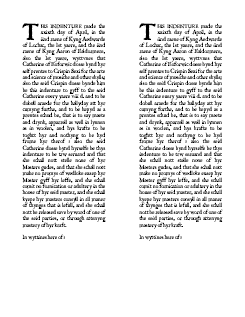
Fig 2: The layout of the two copies of this indenture.
After deciding on a two-column format for this indenture, katherine kerr managed to find me some images of real examples. It turns out that the two copies of the text should have been laid out one below the other, with the top one upside down. When they are cut in half, you end up with two pieces that have a wavy edge at the top and a straight bottom edge for the seals. Note also the letters in the centre that are cut in half.
These indentures, while not specifically for apprentices, show the layouts that were in use.
The Torkshire Archaeological Society Medieval Section (http://www.laplata.co.uk/medievalYAS/manuscripts.html) has a collection of indentures, including the following two:
22nd July 1486, in Latin. John Dawney and John Scotte of Cowick in the Soke of Snaith exchange 5 roods of land in Cowick.
http://www.laplata.co.uk/medievalYAS/content/manuscripts/md182_7.html
Indenture of livery 1317 DD 53/111/492
http://www.laplata.co.uk/medievalYAS/documents/large/indenture.jpg
Gonville & Caius College
Indenture granting the tenements in 'Lurteburghe Lane' (Free School Lane) to John Colton of Terrington, the 'warden' [Master] and Scholars of Gonville Hall, to be the home of their College, 4th June 1349.
http://www.cai.cam.ac.uk/college/archive/exhib/anni/indenture.php
Lambeth Palace Library has a good example on this page:
http://www.lambethpalacelibrary.org/news/appeal.html
I expect to indenture each apprentice I take. For my second apprentice, I took note of the correct page layout for the text and, modified the clauses to keep things interesting and suit any differences in our relationship. This indenture was for a local girl, and I had our Baron, the girl's mother and another Laurel as witnesses.
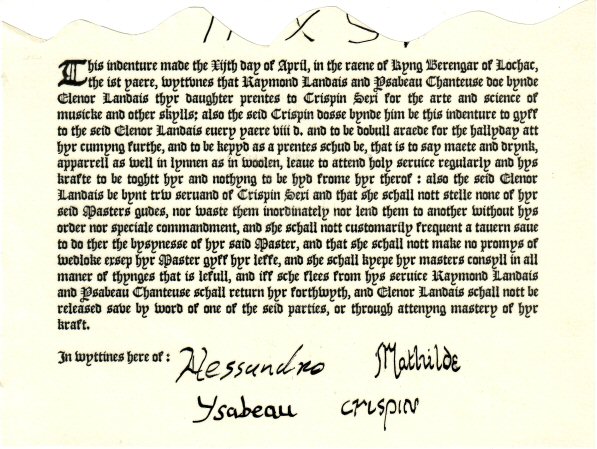
Fig 3: My half of the indenture with my second apprentice.
My Apprentice and then Journeywoman, Aliette
This indenture made the 30th day of November, in the reign of Niall the third and Sabine the first, King and Queen of Lochac, the first year.
Witness that Aliette le Li vre does putteth herself prentess to Crispin Sexi for the art and science of music and other skills; also the said Crispin does bind him by this indenture to give to the said Aliette le Li vre every year 8 pence and to be double arreared for the holiday at her coming fourth, and to be kept as a prentess should be, that is to say meat and drink, apparel as well in linen as in woollen, leave to attend holy service regularly and his craft to be taught her and nothing to be hid from her thereof.
Also the said Aliette le Li vre be bind true servant of Crispin Sexi and that she shall not steal none of her said Masters goods, nor waste them inordinately, nor lend them to another without his order nor special commandment. And that she shall not make no promise of wedlock except her Master give her leave, and she shall commit no fornication or adultery in the house of her said master, nor play no unlawful nor unseemly games, nor get rolling drunk. And she shall keep her master's counsel in all manner of things that is lawful, and Aliette le Li vre shall not be released save by word of one of the said parties, or through attaining mastery of her kraft.
In wyttines here of :
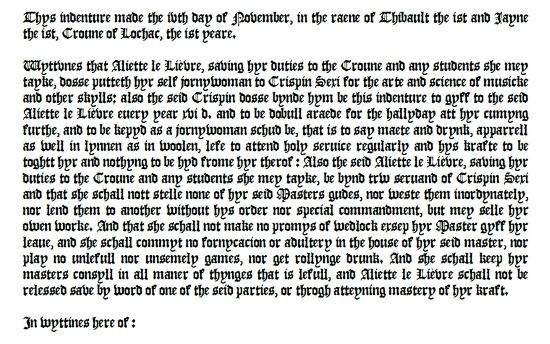
Fig 4: My indenture for Aliette when she became a Journeywoman.
Indenture for Artemisa del Gatto d'Argento
Thys indenture made the ivth day of November, in the raene of Thibault the ist and Jayne the ist, Croune of Lochac, the ist yeare.
Wyttvnes that Artemisa del Gatto d'Argento dosse putteth hyr self prentes to Crispin Sexi for the arte and science of musicke and other skylls; also the seid Crispin dosse bynde hym be this indenture to gyff to the seid Artemisa del Gatto d'Argento euery year viii d. and to be dobull araede for the hallyday att hyr cumyng furthe, and to be kepyd as a prentes schud be, that is to say maete and drynk, apparrell as well in lynnen as in woolen, lefe to attend holy seruice regularly and hys krafte to be toghtt hyr and nothyng to be hyd frome hyr therof : Also the seid Artemisa del Gatto d'Argento be bynd trw seruand of Crispin Sexi and that she schall nott stelle none of hyr seid Masters gudes, nor weste them inordynately, nor lend them to another without hys order nor special commandment. And that she schall not make no promys of wedlock exsep hyr Master gyff hyr leaue, and she schall commyt no fornycacion or adultery in the house of hyr seid master, nor play no unlefull nor unsemely games, nor get rollynge drunk insyde the tavern at Festival. And she schall keep hyr masters consyll in all maner of thynges that is lefull, and Artemisa del Gatto d'Argento schall not be relessed save by word of one of the seid parties, or throgh atteyning mastery of hyr kraft.
In wyttines here of :
Loki's indenture to Aliette
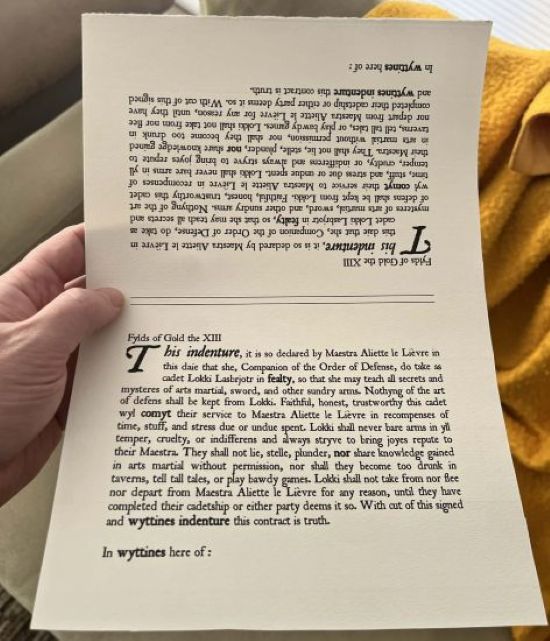
Fig 4: Aliette, now a member of the Order of Defence, took on Loki as a student for rapier and made an indenture for him.
...
For more inspiration, here are some links to indentures by other people in the SCA.
Spurrier, Lisa, Berkshire Family Historian, December 2002 - Apprenticeship documents
http://www.berksfhs.org.uk/journal/Dec2002/ApprenticeshipDocuments.htm
Date accessed: 25 April 2006.
Orme, Nicholas, Medieval Children, Yale University Press, New Haven, 2001 (pp 312-314)
'The Common Paper: The 'new' ordinances [1391]', Scriveners' company common paper 1357-1628: With a continuation to 1678 (1968), pp. 5-8.
http://www.british-history.ac.uk/report.asp?compid=35892
Date accessed: 25 April 2006.
Bound to Serve: Apprenticeship Indentures at the Folger, a guest post by Dr. Urvashi Chakravarty
https://collation.folger.edu/2018/01/indentures/
Date accessed: 7 January 2018.
Other than the quoted examples, this is Copyright Jaysen Ollerenshaw, 2006. Free use for non-profit.
Joan & Crispin's Homepage: https://wotnot.squanderlings.com/